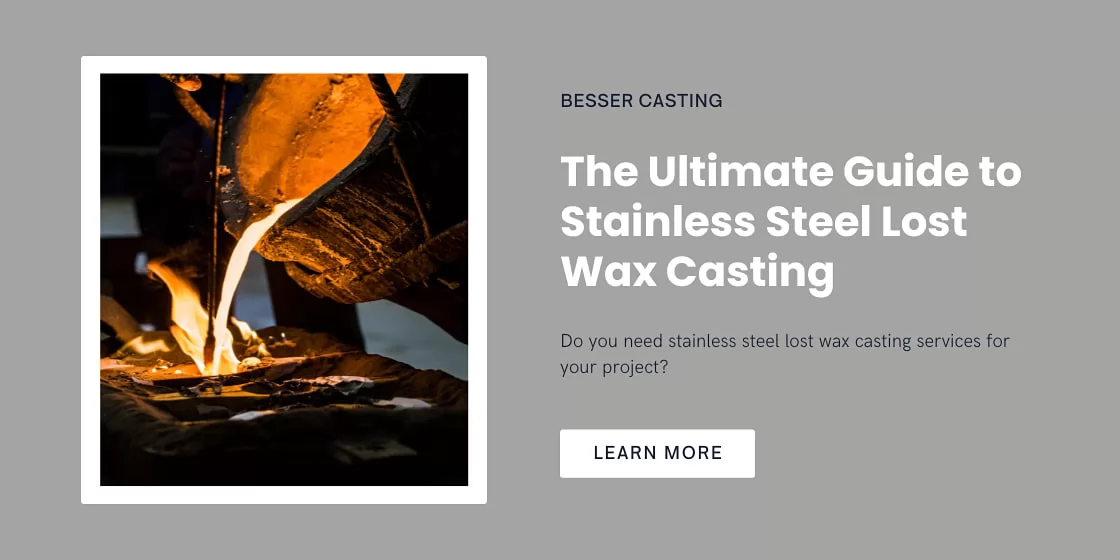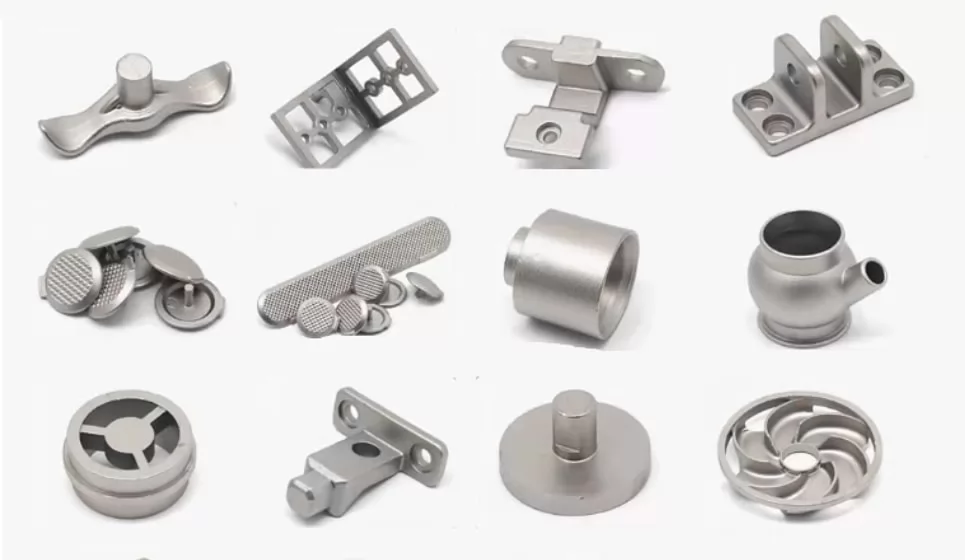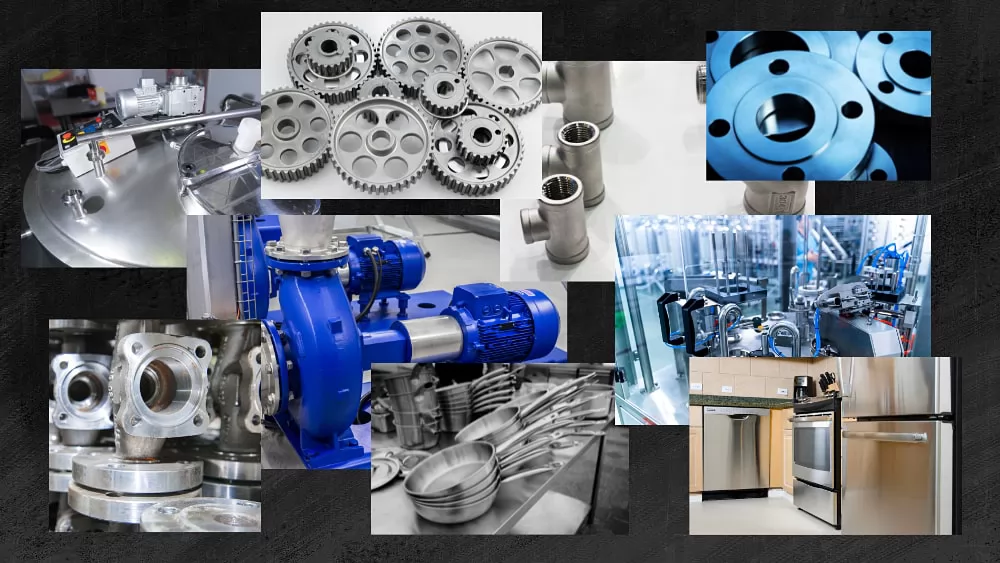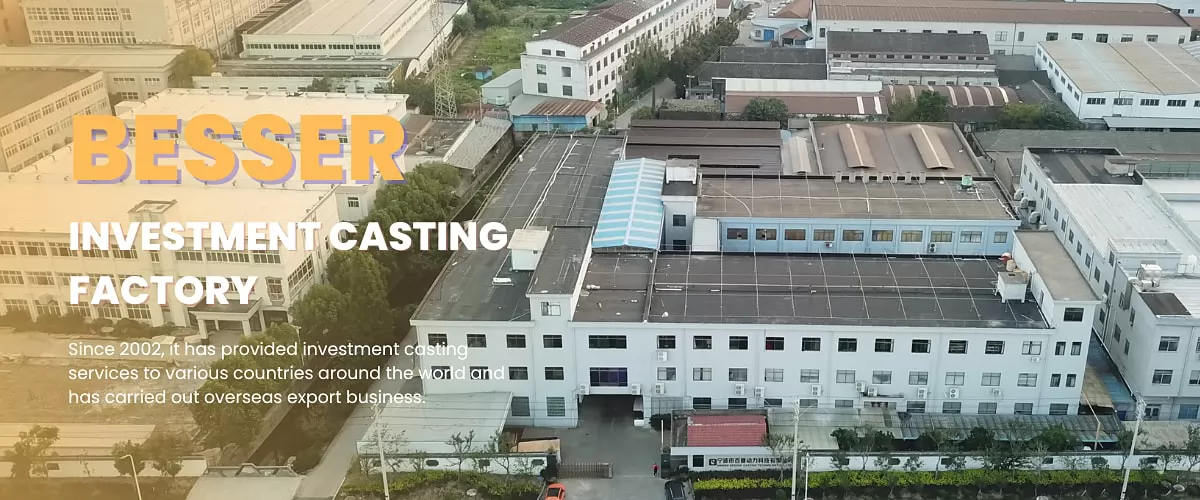
Do you need stainless steel lost wax casting services for your project? What experience do you have in this field? Today, I want to tell you what is stainless steel lost wax casting. I know, this may seem like a complicated industrial process - but, I'll simplify everything for you.
So, even before diving into the ins and outs of stainless steel lost wax casting, here's a quick overview of what you'll learn.
What is Stainless Steel Lost Wax Casting?
Stainless steel lost wax casting refers to the formation of ceramics around a wax pattern to form a shell for pouring molten metal. Once the wax patterns are created, they are melted into the gating system, dipped in mud and sand to form a layered shell, and then replaced with stainless steel molten metal.

Stainless steel lost wax casting produces precision components while minimizing material waste, energy, and subsequent machining. It also ensures the production of very complex parts. This makes the stainless steel lost wax casting process very useful for design engineers.
Stainless Steel Lost Wax Casting Process
Stainless steel lost wax casting is a kind of precision casting, the main process can be summarized as the following 8 steps.
Cast wax pattern
The first step of the stainless steel lost wax casting process is to create a wax pattern of the casting part, using high temperature wax injected into an aluminum molding tool.
Assembly
Step two of the stainless steel lost wax casting process is to attach the wax patterns to a gate or system. Multiple patterns are assembled to allow for large quantities to be produced at one time.
Shell building
Step three of the stainless steel lost wax casting process is to dip the system into ceramic, building up layers until it is thick enough. This shell is typically built to be approximately 3/8” thick.
Dewaxing
Step four of the stainless steel lost wax casting process is to melt the wax out of the cavity, leaving a hollow ceramic outer layer.
Pouring & solidification
Step five of the stainless steel lost wax casting process is to heat the cavity, prevent shock from the temperature of the metal, and pour the metal into the ceramic shell.
Sawing/cutting
Step six of the stainless steel lost wax casting process is the process of removing the casting from the runner system.
Customization
Step seven of the stainless steel lost wax casting process is to grind until the part meets the specifications of the original part. Some parts may require additional heat treatment. Depending on tolerance requirements, some secondary machining might be required for proper function.
Finish
The final step of the stainless steel lost wax casting process is to measure the new part using advanced tools to make sure the new part is an exact duplication of the original casting.
Best Stainless Steel Grades for Casting
There are many stainless steel alloy grades on the market today. The stainless steel grades commonly used in lost wax casting mainly include the following.
Austenitic Stainless Steels Grades
This type of casting is the most commonly used material, accounting for more than 70% of production. Grade 304 is the most commonly specified casting grade, with other popular austenitic grades including 316 and 317.
Ferritic & Martensitic Stainless Steel Grades
This type of casting involves a chromium stainless steel process, with the chromium content varying between 10.5 and 18% along with low carbon content.
Precipitation Hardening (PH) - Martensitic Stainless Steel Grades
This casting has a relatively high carbon content (0.1 – 1.2%) compared to other stainless steel casting types. Popular grades of this type include 410, 416, and 17-4.
Austenitic and Ferritic (Duplex) Stainless Steel Grades
These stainless steels contain relatively high chromium levels (between 18 and 28%) and moderate amounts of nickel (between 4.5 and 8%).
Benefits of Choosing Lost Wax Stainless Steel Casting
There are many benefits to choosing the stainless steel lost wax casting process. The main reasons why many manufacturers choose it to produce castings are as follows.
Design flexibility
With the wide range of stainless steel grades available, you'll enjoy the flexibility to configure your castings to your needs. Stainless steel lost wax casting can even take on complex shapes or contain hollow section parts. Since stainless steel lost wax casting is made through a repetitive process, multiple stainless steel castings can be produced efficiently.
Not prone to rust or corrosion
If you use stainless steel in the lost wax casting process, you don't have to worry about rust or corrosion. For this reason, these become the preferred choice for most industrial applications that subject these components to conditions where metals are prone to corrosion. Some customers also choose aluminum castings to produce parts that are not subject to corrosion. However, they are not as strong, high pressure resistant or durable as stainless steel castings.
Near net shape
Another advantage of using stainless steel for lost wax casting is that it provides better surface finish, tighter dimensional tolerances and greater alloy flexibility. In this way, the result can be near-net shape, requiring less machining and other processes that can increase costs.
Strength and Durability
Most manufacturers choose to use stainless steel lost wax castings also because of their incredible durability and strength. You can expect these stainless steel parts from the lost wax casting process to perform well and stay in good condition for a long time, even when used in extreme temperatures.
Custom design
Stainless steel lost wax casting can be used to make any shape you like. It's also a designer's dream. Logos, product IDs or numbers and letters can easily be added to the interior and/or exterior of components. Many complex stainless steel parts that cannot be forged or machined can be produced by the casting process.
When to Use the Stainless Steel Lost Wax Casting Process
Due to its complexity and labor requirements, stainless steel lost wax casting is a relatively expensive process - but the benefits often outweigh the costs. Virtually any metal can be lost wax cast. Parts made by stainless steel lost-wax casting are often small, but the process is effective for parts weighing 75 pounds or more.
Stainless steel lost wax casting is capable of producing complex parts with an excellent as-cast surface finish. For high-volume orders, the time and labor saved by eliminating or reducing secondary operations can easily make up for the cost of new tooling. Small batches are unlikely to make up for the investment. Often, for runs of 25 or more parts, stainless steel lost wax casting is the logical choice.
It usually takes 7 days to go from a new wax pattern to a full cast; most of that time is spent creating and drying the ceramic shell mold. Some foundries have a quick dry feature to produce castings more quickly. The time and labor-intensive nature of stainless steel lost wax casting affects more than just cost. Foundries have limited equipment and capacity, so long lead times for stainless steel lost wax casting is common
Factors Affecting the Cost of Stainless Steel Lost Wax Castings
For manufacturers, reducing the production cost of parts has always been their focus. Then you need to know what are the main factors that affect the cost of stainless steel castings.
Part Size and Order Quantity
Part size and the number of parts ordered are unavoidable cost drivers when it comes to investment casting. Your part size directly impacts the amount of material used as well as your order size.
Design complexity
Another cost driver is design complexity. At Besser, we work with you from the outset to determine if any changes can be made to the design of the casting to reduce costs.
Mold cost
Costs can be impacted based on the tooling options that are best suited for your application. The higher the number of cavities per mold, the higher the mold cost.
Application of Stainless Steel Lost Wax Casting

Due to the unique physical properties of stainless steel, stainless steel lost wax castings serve a wide range of industries, the following are the main applications of stainless steel castings:
Food Machinery
Almost all food processing equipment is made of stainless steel due to its rust-prevention capability. Such food processing equipment is normally assembled with many stainless steel components. There are several processing processes to produce these stainless steel components, such as casting, forging, welding, machining from the plate, etc. Among them, casting is the most flexible manufacturing process to produce complex shaped components for food processing machinery. So stainless steel casting is widely used for food machinery applications! Typical food machinery components made in the stainless steel casting process are metal grinder components, coffee machine components, etc.
Valve & Pump Components
Stainless steel casting is the most widely used technique for valve & pump components. For its complicated design of valve and pump components, stainless steel casting is able to produce any complex shape. Valve and pump components from stainless steel casting are durable enough for severe service applications. So stainless steel casting is a cost-efficient way and a popular selection for pump and valve applications. Common valve & pump components made from stainless steel casting are the valve body, valve disc, valve bonnet, valve gland, pump body, pump impeller, etc.
Marine Application
Stainless steel casting is used in marine applications which require parts that are strong with extremely high resistance to heat, abrasion, and corrosion. Besser foundry uses a wide range of stainless steel alloys for recreational, governmental, and commercial marine components. Stainless steel marine castings can be polished to a mirror finish for maximum corrosion and abrasion resistance.
New marine grade stainless steel investment castings for marine applications could be supplied electro-polished and machined by our company, saving our customers 30% on their current spend.
Pipe Fittings
Pipe Fittings are components used for connecting, terminating, controlling flow, and changing the direction of piping in many different industries. When purchasing pipe fittings, considering the application, these pipe fittings are normally made of stainless steel 316, which is higher strength and more corrosion resistant than stainless steel 304. Stainless steel casting is the most cost-effective method for small-volume production.
Usually produced stainless steel cast fittings are elbow, tee, bushing, close nipple, etc. Our machining capability can meet any machining requirement like threads.
Stainless Steel Lost Wax Casting FAQ
Q1. What are the commonly used grades of stainless steel lost wax castings?
A1: The common grades of cast stainless steel are: 304, 316, 304L, 316L, 17-4 PH, 410, 416, 2205, 2207, etc.
Q2. What are the advantages of stainless steel lost wax castings?
A2: Stainless steel lost wax casting allows the production of stainless steel components with complex shapes, less or no machining, no quantity limitations, etc.
Q3. What general tolerances are stainless steel lost wax castings to meet?
A3: For stainless steel investment castings, we can achieve general tolerances of ISO 8062 CT5-CT6. For smaller precision parts, ISO 8062 CT4 can be used.
Stainless Steel Lost Wax Casting Vs Sand Casting
The lost wax casting process is often used to produce parts that require great precision. This casting process makes thin walls and complex cavities possible.
The lost wax casting process gives you finer details and a smoother surface finish than other casting techniques.
For example, sand casting is a process that uses a mixture of sand and clay to create a mold around a pattern of the final product. This mixture is more porous than the wax patterns used for lost-wax casting, which means sand casting cannot produce complex parts.
Do You Need Stainless Steel Lost Wax Casting Services for Your Project?

At Besser we also have our own foundry and a strong team of professional engineers who have the skills and experience needed to get the job done right. From design and prototyping to production, we manufacture precision parts and provide a consistent production schedule.
As a premium Stainless Steel Casting Manufacturer, we have extensive experience in numerous industrial and transportation sectors and have a long list of satisfied clients.
If you are looking for comprehensive, one-stop stainless steel lost wax casting services, Besser is ready to be your partner.
Contact us via this link today to request a quote so we can supply you with as-cast or fully-machined parts in many different stainless steel alloys!



